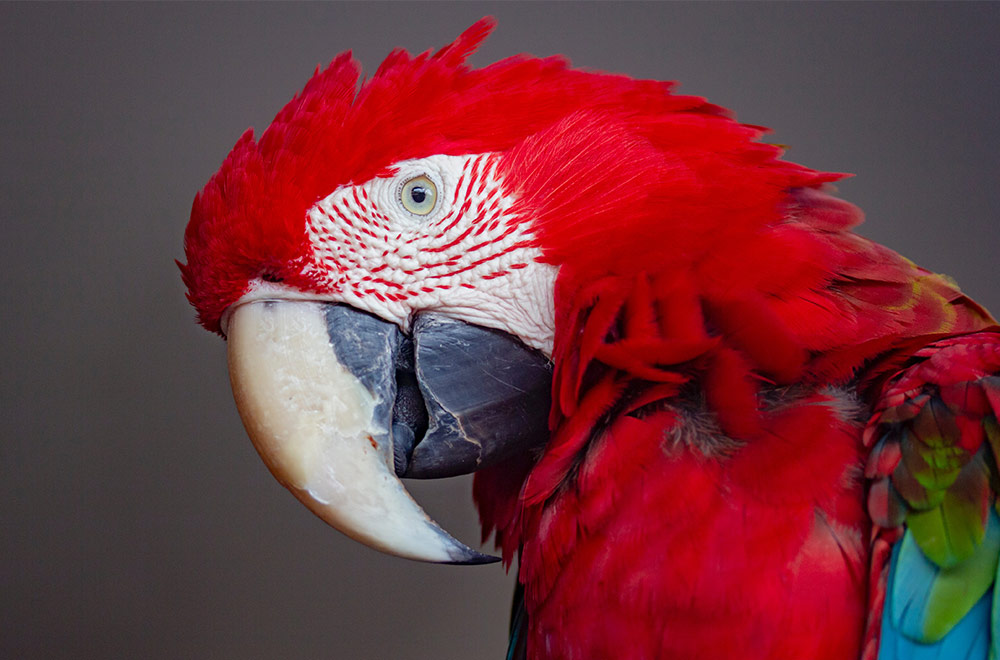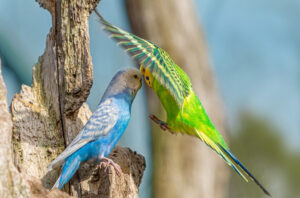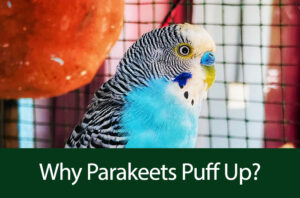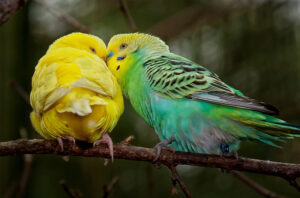The Alexandrine parakeet which is also referred to as the Alexandrine parrot is native to Asia, notably Eastern India (Andhra Pradesh, Hyderabad) and Sri Lanka.
It is recognized as being among the vast parakeet species globally, now habitually found in other places like Germany, southern England, and western Turkey.
This beautiful mid-sized bird is independent and intelligent, added to being relatively calmer and stronger than its Indian ring-necked parrot cousins.
The Alexandrine parakeet is named after emperor Alexander the Great (356 B.C), who exported them to the Mediterranean and Europe where it became very popular.
Scientific Classification
- Kingdom – Animalia
- Sub kingdom – Bilateria
- Phylum – Chordata
- Subphylum – Vertebrata
- Class – Aves
- Order – Psittaciformes
- Superfamily – Psittacoidea
- Family – Psittaculidae
- Subfamily – Agapornithinae
- Genus – Psittacula
- Scientific name – Psittacula eupatria
Quick Information
- Other names: Alexandrine parakeet, Alexandrian parrot, Ceylonese parakeet, Andaman parakeet, Thai rose-ringed parakeet, Burmese parakeet, Alexandrine ring-necked parakeet.
- Life span: 25 – 40 years
- Size: The alexandrine parrot sizes range from 50 – 62cm.
- Wingspan: 7.5 – 8.5 inches [18.9 – 22 cm]
- Weight: 220 – 260g
- Color: The male Alexandrine parakeet distinctively has a pink back neck, a dark ring round the neck, alongside a grayish sparkle on the cheeks and nape. Meanwhile, the female Alexandrine parakeet has a pale grey neck ring. And finally, the chicks, look exactly like the adult female Alexandrine parakeet in color.
Subspecies and Distribution
| Subspecie | Name | Destribution |
|---|---|---|
| eupatria | Alexandrine parakeet | This specie can be seen in Eastern India (Andhra Pradesh, Hyderabad) and Sri Lanka to the south. |
| nipalensis | Nepalese Alexandrine parakeet | Found in Nepal, India (north, central and northeastern regions), Pakistan and Eastern Afghanistan. |
| magnirostris | Andaman Islands’ Alexandrine parakeet | The name alone clearly spells out the distribution of this specie, which is the Andaman Islands. |
| avensis | Indo-Burmese Alexandrine parakeet | Found in Myanmar and Northeastern India. |
| siamensis | Siamese Alexandrine parakeet | Cambodia, Vietnam, Laos, Thailand (north and east). |
More information about the Alexandrine Parrot
Habitat
Their natural living environment includes moist forests, cultivated areas, mangrove swamps, coconut plantations, and woodland areas.
Sound
The Alexandrine parakeet is generally known to be a quiet and obedient parrot, but it can get loud and noisy when neglected or disturbed.
Consequently, you will get very high pitched whistles and other distress sounds. However, it can mimic common names and familiar phrases, as well as produce cute and melodious whistle sounds.
Clutch
It lays 2 – 4 eggs with an incubation period of around 28 days.
Fledging
The chicks fully grow feathers after 7 weeks.
Diet
Fruits, vegetables, flowers, and seeds.
IUCN (International Union for Conservation of Nature) status
Near Threatened.
Alexandrine Parrot Mutations
Alexandrine parrots are known for their striking natural plumage, but selective breeding has also given rise to various mutations that exhibit unique color patterns.
These mutations are the result of genetic variations and have led to an array of captivating Alexandrine parrot variants.
Here are some of the most prominent mutations seen in these charismatic birds:
- Lutino Mutation: The Lutino Alexandrine parrot features vibrant yellow feathers and red eyes. This mutation eliminates melanin pigments, resulting in the absence of green and blue colors.
- Blue Mutation: The Blue Alexandrine parrot showcases shades of blue and turquoise instead of the traditional green. This captivating coloration is a result of altered pigmentation.
- Cinnamon Mutation: The Cinnamon mutation results in a warmer, brownish color palette instead of the usual green. The plumage takes on a cinnamon or taupe hue, creating a distinct appearance.
- Fallow Mutation: Fallow Alexandrine parrots display muted and softer hues in their feathers, often with a grayish tinge. This mutation affects the distribution of melanin, resulting in a unique pastel-like appearance.
- Greygreen Mutation: The Greygreen mutation modifies the green plumage, giving it a slightly diluted and subdued appearance. This mutation can vary in intensity, resulting in different shades of greyish-green.
- Violet Mutation: The Violet Alexandrine parrot showcases richer and deeper colors, often with a purplish hue. This mutation enhances the overall vibrancy of the plumage.
- Pied Mutation: The Pied mutation introduces areas of white or light-colored feathers amid the usual green. The extent of pied markings can vary, creating a beautifully mottled effect.
- Albino Mutation: Similar to the Lutino mutation, the Albino Alexandrine parrot lacks melanin pigments, resulting in an all-white bird with red or pink eyes.
- Dark-Eyed Clear Mutation: This mutation reduces melanin pigments, resulting in a bird with pale or clear feathers and dark eyes.
These mutations have added a new dimension to the world of Alexandrine parrot breeding and ownership. Each variation carries its own distinct charm, making Alexandrine parrots even more alluring to enthusiasts and admirers.
It’s important to note that responsible breeding practices are essential to maintain the health and well-being of these unique parrot variants.
Alexandrian parakeet (parrot) as a pet
The Alexandrine parakeet’s social behavior and friendly character make it an awesome choice to have as a pet.
Housing
First and foremost, if you wish to accommodate a beautiful Alexandrine parakeet as a pet, comfort must be highly prioritized. In fact, a bird-house measuring 36x24x24 inches in size, along with many poles will be perfect and comfortable enough for the bird.
Moreover, the Alexandrine parakeet is quite vulnerable to feet-related problems when it stands for too long. Hence, it explains the need for multiple cage bars since it loves to climb up and down.
To satisfy the chewing habits of the Alexandrine parrot, acrylic, rope, leather, and wooden toys should be put in its cage, and a nest box of 12x12x18 inches added during the breeding season.
CAUTION: Always check for cage resistance because they have tremendous beak strength.
Temperature
Environmental temperature is another important factor to always consider. The Alexandrine parakeet is very comfortable with temperatures ranging between 40° F and 90°F. Lower temperatures expose this cute parrot to many different health problems.
Behavior
Although the Alexandrine parrot can be obedient, quiet, and shy in a new environment, it does not take long to shed its shyness and blend in. This appealing Asian bird is an amazing chatterbox capable of keeping you entertained all day long with sounds and funny tricks.
The Alexandrine parakeets are fast learners and you don’t need to do too much to make them talk.
If well trained, your parrot will be comfortable sitting on your laps and shoulders. However, this beauty can become aggressive if unattended for prolonged periods. So, be watchful for aggressive signs such as eye spinning.
Diet
The Alexandrine parakeet enjoys eating vegetables and fruits of all sorts. Fruits like papaya, mangoes, peaches, grapes, and vegetables like beetroot, broccoli, cabbage, squash, etc. are perfect for them.
You can also serve them homemade chicken or pork, oatmeal, and pasta once in a while. Notably, avoid serving them with avocado and toxic rhubarb, dairy products, and fatty caffeinated foods.
Also, please note that excessive consumption of onion and garlic can cause anemia. To learn more about a healthy diet, read our article “Budgies diet and everything you need to know”.
Care
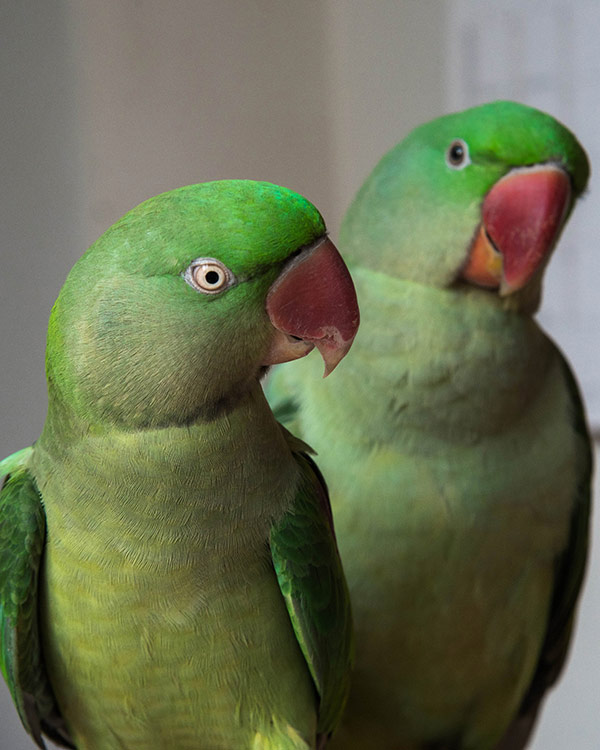 Taking proper care of Alexandrine parakeets can be challenging for newbies particularly because, factors like housing, feeding/diet, hygiene, healthcare, etc. are super important.
Taking proper care of Alexandrine parakeets can be challenging for newbies particularly because, factors like housing, feeding/diet, hygiene, healthcare, etc. are super important.
For instance, using freshwater to wash your lovely parrot is highly recommended as it keeps the skin and feathers in good condition. Also, try not to scrub its feathers out and use a bird lamp for drying.
The cage must be spacious enough for their long tail feathers to fit in freely. Alexandrine parrots like others, are chewing machines and require lots of toys and softwood to keep them busy and happy.
You can add shatterproof acrylic toys, rope toys, and puzzle toys with hidden nuts for them to take on entertaining challenges.
Clean the cage and toys regularly to ensure the environment is hygienic at all times, especially because the parakeet loves to clutter water with its food. So, it is advisable to change the water at least twice daily.
The Alexandrine parakeet is always peaceful with other parrots, although it may be aggressive towards other bird types. So, keeping other bird species away from it is an ideal thing to do.
If you have a ‘cousin’ parrot like a Nepalese Alexandrine parakeet or an Indian ring-necked parakeet, letting them play together is fine. However, you should be vigilant not to allow two parakeet species to breed.
This intelligent parrot is a lovable bird with a lifespan of over 30 years if properly cared for. Read everything you need to know about budgie care.
Health problems
Common diseases associated with the Alexandrine parakeet include parrot fever or psittacosis, aspergillosis, fatty tumors or lipomas, atherosclerosis, fatty liver or hepatic lipidosis, and bumble-foot or pododermatitis which is caused by Vitamin ‘A’ deficiency.
Alexandrine Parrot Male Female Difference
Male and female Alexandrine parrots, like many other bird species, exhibit certain differences in physical characteristics and behavior that can help distinguish between the sexes.
While these differences can be subtle, they play a significant role in identifying the gender of these beautiful birds.
Physical Differences:
- Size: In general, male Alexandrine parrots tend to be larger in size compared to females. However, this difference may not always be easily noticeable.
- Cere: One of the most reliable ways to differentiate between male and female Alexandrine parrots is by observing the cere—the fleshy area above the beak where the nostrils are located. In mature males, the cere is typically larger, wider, and more prominent. It often develops a blue coloration during the breeding season. In females, the cere is usually smaller and may have a pale pink or light brown color, especially during the breeding season.
- Head Shape: Some owners and breeders claim that males may have slightly broader and more rounded heads compared to females, but this characteristic can vary.
- Coloration: While color differences are not very pronounced in Alexandrine parrots, some males may exhibit slightly brighter or more intense colors on their plumage.
Behavioral Differences:
- Calling and Vocalizations: Male Alexandrine parrots are often more vocal than females, especially during the breeding season. Males may engage in louder calls and mimicry to attract females.
- Courtship Displays: Male Alexandrine parrots may engage in courtship behaviors to impress females. These displays can include fluffing up feathers, bobbing the head, and offering food.
- Bonding: Male Alexandrine parrots may become more territorial and protective during breeding periods. They may also become more affectionate towards their human caregivers.
- Egg-Laying: Female Alexandrine parrots are the ones responsible for laying eggs. If you notice your parrot laying eggs, it’s a clear indicator that the bird is female.
It’s important to note that while these differences can be helpful in identifying the gender of Alexandrine parrots, they are not foolproof.
The most accurate way to determine the gender of a parrot is through DNA testing, which can provide definitive results.
Consulting with an avian veterinarian or an experienced breeder can also provide valuable insights into identifying the gender of your Alexandrine parrot.
How much does Alexandrine Parakeet cost?
The Alexandrine parrot could cost from $600 to $1,200 or higher, depenging on the color mutations.
Alexandrine Parakeet for adoption
Are you ready to adopt a lovely Alexandrine parrot? Check out Search & Adopt pets, it’s a nice tool to find a parakeet (or parakeets?) nearby ready to be adopted & loved.
Interesting facts
“Noble origin” is the meaning of Alexandrine parakeet’s Greek scientific name “Eupatria”.
It is named after the famous Greek monarch emperor Alexander the Great, who is credited to have exported a great deal of Alexandrine parrots to the Mediterranean and Europe from Punjab – India.

